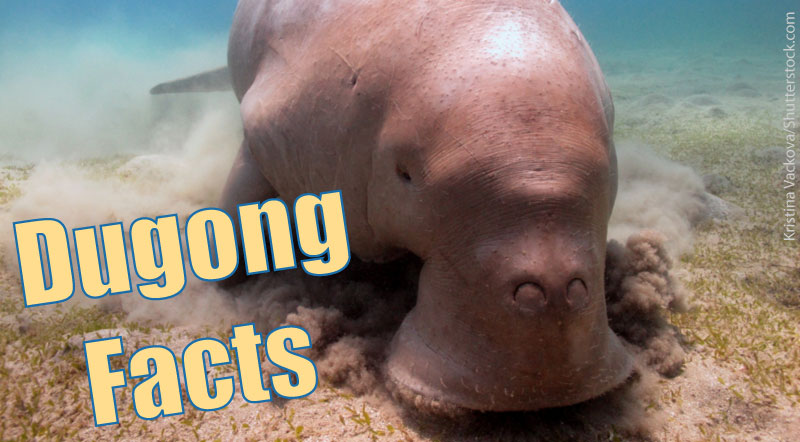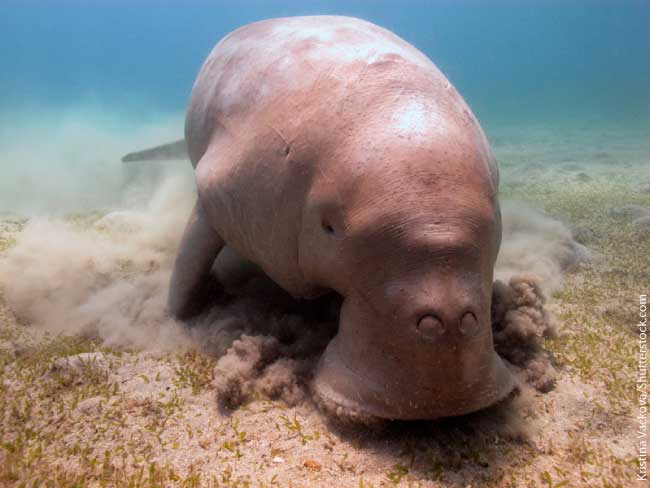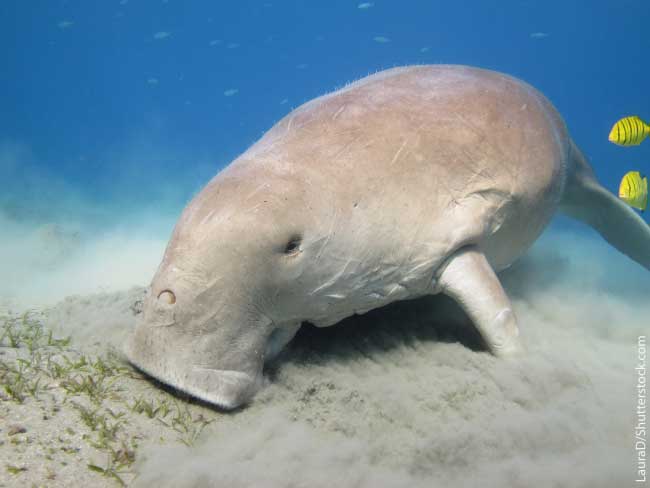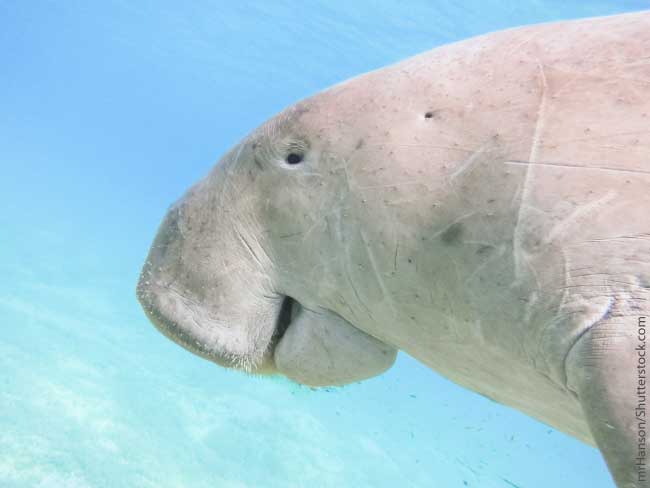Dugongs are strange-looking marine mammals that are found off the northern coast of Australia. This article contains dugong facts and information. It is part of our Australian Animals series.
Dugong Facts: Introduction
Dugongs are closely related to manatees, and are commonly known as ‘sea cows’ due to their peaceful grazing nature.
Dugongs have dull grey, torpedo-shaped bodies with paddle-like forelimbs, and a fluked tail like a dolphin. Mature males have tusks.
Dugongs lack dorsal fins and hind limbs.
Dugongs are notoriously shy and do not approach humans, which makes getting data on these elusive animals difficult.
The closest relative of the Dugong, Stellar’s sea cow, was hunted to extinction within 27 years of it discovery in the 18th century.
Dugong Facts: How Big is a Dugong?
Dugongs can be as big as 10 feet (3 meters) long and can weigh a whopping 1000 pounds (499 kilograms)! Baby Dugongs can be up to 4 feet (1.2 meters) long and weight up to 66 pounds (30 kilograms).
Dugong Habitat
Dugongs can be found in coastal waters from the western Pacific Ocean to the eastern coast of Africa. Dugongs are strictly marine mammals, unlike manatees which require freshwater phases during their life cycle. Dugongs are highly dependent upon seagrass habitat for feeding, restricting its range to coastal regions where seagrass meadows can be found.
What Do Dugongs Eat?
The name ‘sea cows’ comes from the fact that Dugongs love to feast on seagrass. Dugongs have powerful downturned, bristled, sensitive snouts which allows them to feed in the seagrass, kind of like a vacuum cleaner. When seagrass is scarce they may eat algae and sometimes even invertebrates like jellyfish, sea squirts and shellfish. Feeding tend to occur at very shallow depths of only 1 to 5 meters.
The awesome video below, taken by a scuba diver, shows a dugong feeding, then coming up for air.
Dugong Families
Dugongs become mature between 8 and 18 years of age. When males are mature, tusks will become visible. Females will only give birth a few times throughout their lives and provide extended parental care to their babies.
It takes 13 to 15 months for a female to produce a single baby (a calf), and there may be as long as 3 to 7 years between pregnancies.
As seagrass beds cannot support large groups, Dugongs are often solitary or live in pairs, however, large groups called ‘herds’ are sometimes observed for brief periods of time.
Dugong Threats – Are Dugongs Endangered?
Although commercial hunting of Dugongs has been banned, Dugongs are still listed as vulnerable on the IUCN Red List due to habitat loss through coastal development as well as water pollution caused by industrial activities.
Dugongs can also fall victim to bycatch, getting tangled in fishing nets.
Good quality seagrass habitat is vital to Dugong reproduction. Dugongs have few natural predators, but young may be attacked by crocodiles, orcas and sharks. They are also vulnerable to diseases.
There are several charities that help dugongs and other marine creatures. This appeal was set up by the University Of Queensland to aid dugong conservation.
Dugong Facts
- Dugongs can live for 70 years or more.
- Dugongs are more closely related to elephants than to other marine mammals.
- The colour of a Dugong can change due to growth of algae on the skin.
- Dugongs will sometimes ‘stand’ on their tails with their heads out of the water
- As soon as a baby Dugong is born, the mother pushes it to the surface so that it can take a breath of air.
- Dugongs are thought to be the inspiration for ancient seafarer's tales of mermaids and sirens.
- Dugongs and manatees are the only herbivorous marine mammals alive today.
- Dugongs like warm water and are found between 27° north and south of the equator.
- There may be more than 80,000 Dugongs in Australian waters, more than half the world’s total.
- The scientific name for a Dugong is Dugong dugon.
Discover More with Active Wild
We hope that you have enjoyed reading about these amazing dugong facts.
You can discover more amazing Australian animals on this page: Australian Animals List with Pictures & Facts





